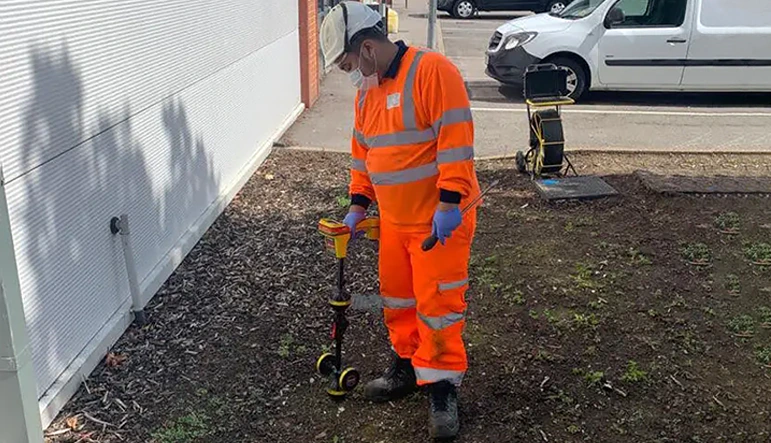 Add My Company
Add My Company
Sign In

Accurate data collection is crucial for informed decision-making. On-site drain mapping offers a viable solution for efficient utility data gathering. Proper implementation can lead to improved operations, increased safety, and better resource allocation. On-site drain mapping involves surveying and documenting the location, condition, and features of stormwater and wastewater infrastructure. This information supports utility professionals in effectively managing their systems. As technology advances, the adoption of new tools and techniques for on-site drain mapping is becoming increasingly popular. These tools, when combined with good practices and knowledgeable staff, can result in significant improvements in utility data collection and management. This blog post aims to delve into the advantages, obstacles, and most effective approaches when it comes to on-site drain mapping. The process of drain mapping involves creating a detailed map of the drainage network on a particular property, which can be extremely helpful in identifying potential issues and preventing future problems. However, like any other task, it comes with its share of benefits and challenges that must be considered before proceeding. By examining the various aspects of on-site drain mapping, readers will gain a better understanding of its significance and how to implement it efficiently. We will also discuss current trends and share success stories to help you better understand the value of this approach for your utility operations. Maximize the efficiency of your utility data collection process with on-site drain mapping! What is On-Site Drain Mapping?On-site drain mapping is the process of surveying and documenting the location and features of stormwater and wastewater infrastructure. This can include:PipesManholesCatch basinsInlets and outletsPumps and valvesOther relevant componentsBy creating a comprehensive map of the drainage system, utility professionals can better understand the layout and condition of their infrastructure. This information can be used to prioritize drainage maintenance, plan upgrades, and respond more effectively to emergencies. Benefits of On-Site Drain MappingImproved System Knowledge:Accurate inventory of assetsIdentification of system vulnerabilitiesBetter understanding of system capacity and performanceEnhanced Decision-Making:Prioritize maintenance and repair activitiesPlan capital improvement projectsOptimize resource allocation and budgetingIncreased Safety and Efficiency:Faster emergency responseReduced risks associated with unidentified hazardsStreamlined operations and maintenance activities Advantages of On-Site Drain Mapping for Utility Data CollectionAccurate Data
On-site drain mapping provides detailed, up-to-date information about the drainage system. This ensures that decisions are based on the most accurate data available, leading to better outcomes for utilities and their customers. Cost Savings
Implementing a comprehensive drain mapping program can lead to significant cost savings. By identifying and addressing issues proactively, utilities can avoid costly emergency drain repairs and reduce the potential for system failures. Enhanced Customer Service
With a complete understanding of the drainage system, utility professionals can respond more effectively to customer concerns. This leads to increased customer satisfaction and improved public relations. Challenges of On-Site Drain MappingDespite its many benefits, on-site drain mapping also presents some challenges. There are often access limitations to underground infrastructure, making it difficult to obtain accurate data. Additionally, the process can be time-consuming and labour-intensive, requiring skilled personnel to complete the work. Finally, there is a need for ongoing maintenance and updating of the drain maps to ensure they remain current and useful. However, with the right tools, techniques, and training, these challenges can be overcome. Continued investment in on-site drain mapping technology and staff development will be essential to maximizing the benefits of this approach. Best Practices for Implementing On-Site Drain MappingDevelop a Comprehensive Plan:Establish project objectives and prioritiesDetermine scope and scale of data collectionAllocate resources and budget accordinglyUse Appropriate Technology:Research available tools and equipmentSelect technology that best meets project needs and budgetEnsure staff is trained on the proper use of equipmentMaintain and Update Drain Maps:Regularly review and update maps to ensure accuracyEstablish a system for tracking changes and updatesIncorporate new data as infrastructure is repaired, replaced, or expanded Trends in On-Site Drain MappingAs the field of technology continues to evolve, an array of innovative tools and techniques have emerged, which have greatly enhanced the process of on-site drain mapping. These advancements have made it possible to locate and evaluate the condition of drainage systems, enabling professionals to make informed decisions regarding the maintenance and repair of these critical infrastructure elements more accurately. As such, the use of cutting-edge technology in drain mapping has become an increasingly valuable practice for ensuring the efficiency and longevity of drainage systems. Drones, remote sensing, and GIS (geographic information systems) are all being used to streamline the data collection process. These cutting-edge technologies offer the potential for more efficient and accurate drain mapping, helping utilities to better manage their infrastructure and enhance their decision-making capabilities. Examples of On-Site Drain Mapping Success StoriesSeveral utilities have already realized the benefits of implementing comprehensive on-site drain mapping programs. These success stories demonstrate the value of this approach for improving utility data collection and infrastructure management. By investing in on-site drain mapping, these organizations have been able to enhance their decision-making, optimize resource allocation, and ultimately deliver better service to their customers. Take a look at our case studies here. In conclusion, on-site drain mapping is an invaluable tool for utility data collection and infrastructure management. By implementing a comprehensive drain mapping program, utilities can improve their system knowledge, enhance decision-making, and increase safety and efficiency. With continued investment in technology and best practices, on-site drain mapping will continue to play a crucial role in the future of utility operations.Get A Full Understanding Of Your Underground Assets Avoid costly damages, delays, and make informed decisions with on-site mapping.
Call 0800 612 8038
For more information on Maximizing Efficiency with On Site Drain Mapping talk to Drain 247
Enquire Now
More Blogs
List your company on FindTheNeedle.

